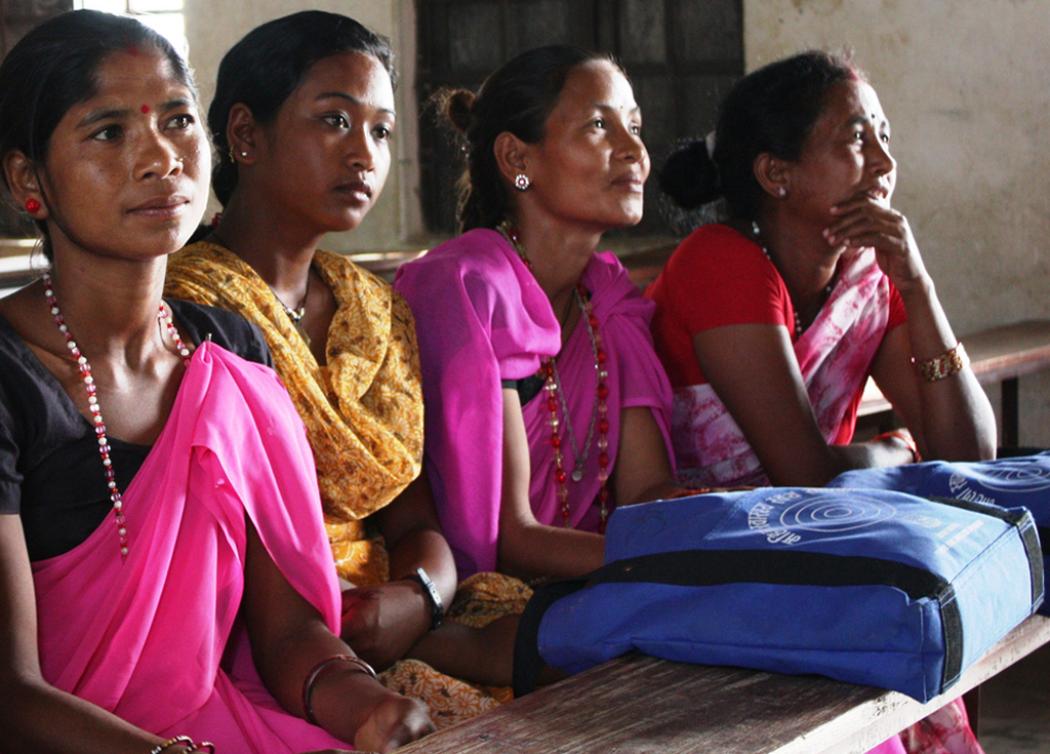Counting Down to 2030 Requires a Refocus on Frontline Health Workers

Photo of community health workers in Nepal courtesy of Jhpiego
With less than a decade left to attain a host of global health and development targets, the time for discussion is over. It’s now or never that we get the job done by focusing on what we know will work to achieve important global commitments such as the Sustainable Development Goals, UHC2030, FP2030, and the World Health Organization’s Global Technical Strategy for Malaria.
Frontline health workers and strong primary health care systems are critical to our success. And we know they work. We also know we need enough of the right health workers to provide the right services, in the right places, and at the right times. That means we need to train a fit-for-purpose frontline health workforce based on local needs, realities, and disease burden, while also ensuring that the existing frontline health workforce has the capacity, tools, resources, and time to deliver high-quality services.
The WHO’s estimates of the shortfall of health workers and the health investments needed to achieve the Sustainable Development Goals are well known. Yet investments in the existing health workforce are much lower than is often assumed, reducing long-term sustainability.
Clearly, we still have a long way to go in a short amount of time, and this is why it’s vital to recognize, learn from, share, and replicate what’s proven to work. And it isn’t always big financing.
A focus on community health workers
My colleagues at Jhpiego—a global health NGO and Johns Hopkins University affiliate—used a pictorial gender-based violence (GBV) toolkit to conduct a one-day orientation on GBV for 116 female community health volunteers (FCHVs) working in Mangalsen municipality in Nepal.
The FCHVs learned how to ask questions and identify signs of GBV during routine home visits and how to shift conversations to general, health-related topics if family members entered the room and the client no longer felt comfortable talking candidly. They also learned how to tell GBV survivors about the services available in health facilities and one-stop crisis management centres, provide contact information for those services, and refer them to health facilities, but not record anything on the spot to avoid the referral being seen by other family members or the perpetrator.
Over the following year, data were collected from knowledge and attitude assessments, and showed that the volunteers’ knowledge increased, their own attitudes about the acceptability of GBV changed, and their confidence grew in addressing GBV. The community health volunteers identified 1,253 GBV survivors. And 251 GBV survivors visited health facilities—a three-fold increase from the number of survivors seeking health services the year before.
Notably, the pilot project indicated that the most significant role community health volunteers played in addressing GBV at the community level is preventive. In other words: FCHVs effectively stopped GBV before it happened by mediating conflicts and curbing harmful practices such as menstrual isolation. Women from the communities trusted and looked to them for help.
All of this resulted from an investment of one day of training, followed by short, monthly meetings to review what the FCHVs learned and discuss how they were applying it in the community.
Big rewards
This example shows what’s possible when frontline health workers have the knowledge, tools, competence, and confidence to perform their scopes of practice. Not everything is solved so elegantly and simply, of course. But this is a powerful and exciting proof of concept that can be replicated in other places and ways if we think creatively and expansively about what investment in frontline health workers really means.
I wonder about other ideas we might share with each other that we can learn from, test, and scale-up. What innovations in learning, capacity-building, quality, and efficiency would allow us to do more with less; and to work towards our global goals with increasingly restricted resources?
Let us inch—if not leap—toward achieving global goals by collectively acting in this International Year of Health and Care Workers. Let’s explore any and all opportunities to invest in the health, well-being, capacity, and numbers of those on the frontlines of everything from COVID-19 to GBV. Remember, small investments can reap big rewards.
Jhpiego’s Chief Nursing and Midwifery Officer, Pandora Hardtman, DNP, CNM, RN, FACNM, contributed to this blog.
